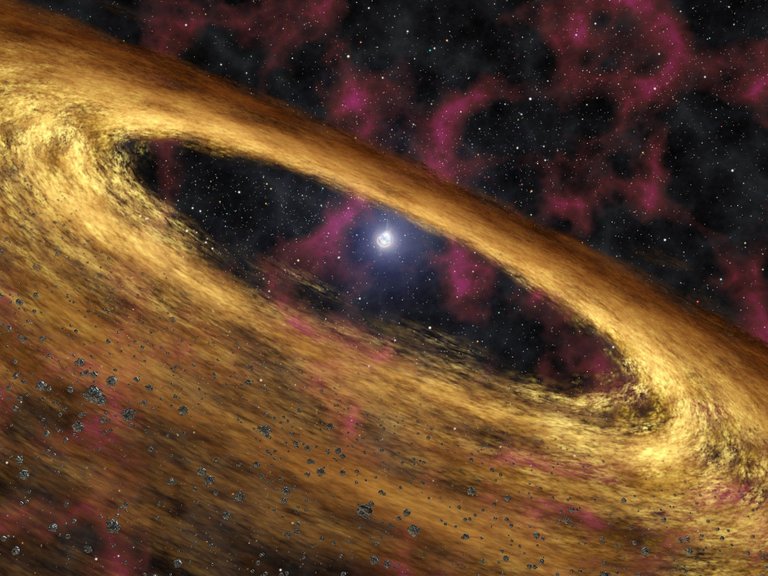Charging The Pulsar!
The SAX J1808.4-3658 pulsar which can be found in the Sagittarius constellation in a distance of roughly 11 thousand light-years away from us was recently charging for its big moment when it expels a gigantic stream of matter and energy.

- Be also sure to check out my other posts and follow me @kralizec and subscribe to my Youtube channel at Kralizec Gaming Youtube Channel
Neutron stars themselves are quite extreme. But some of them are even more extreme. There are neutron stars that like to gather matter in an accretion disc only to one day fire off a devastating eruption of radiation, energy, and matter that is thousand times brighter than the Sun
An international team led by Adelle Goodwin from the Monash-University in Australia had the unique chance to observe the process continuously and in detail. From the very start to the very end. The observation itself was quite demanding as it required five research groups and a total of seven telescopes – five terrestrial and two in space.
But in the end, the scientists got their sweet reward. They got to observe the event in great detail, on many different frequencies which included both the visible and the x-ray part of the electromagnetic spectrum. And the physics of the processes behind how pulsar going off after it had a bit too much to eat is something that has been bothering scientists for decades.
The detailed observation of the “charging” up allowed the researchers to study the structure of the accretion disc. At the same time, it allowed them to find out how quickly and freely does the material in the disc move. To their surprise, the researchers found out that the neutron star accumulated material for 12 days after which it fired it off. But most theories thought that it should only take 2 to 3 days.
The pulsar in question is called SAX J1808.4-3658. This pulsar “pulses” 400 times per second and can be found in the Sagittarius constellation at a distance of roughly 11 thousand light-years away from us. It is part of a stellar system in which it steals material from a normal star. This material then creates the accretion disc. When the pulsar charges up with enough energy it fires of a pulse releasing an enormous amount of energy. Truly enormous – about as much as the Sun releases in 10 years.
Usually, accretion discs in such systems are mostly made from hydrogen. The accretion disk around SAX J1808.4-3658 includes about 50 % helium. That is much more than other accretion discs tend to have. And the researchers think this is most likely the reason why it takes this long for this particular pulsar to charge.
Sources:
- https://www.monash.edu/science/news/current/astronomers-capture-a-pulsar-powering-up
- https://arxiv.org/abs/2006.02872
- If you like the content I’m producing about science maybe you will like the content I produce about gaming as well! Be sure to check out my other posts!